

具体描述
编辑推荐
《中国文化概要(第二版)》是“翻译专业必读书系”之一。作者从语言、思想、历史、文学等不同侧面阐述了中国文化自身的特点,梳理了中国传统文化的发展和演变过程。此次是本书的第二版,以翻译专业的研究生为教学对象。作者在原书侧重思想文化的基础上,加入了《语言篇》,以期学生从中对汉语特色方面的问题有所启发和思考,点燃研究的兴趣。另附“名词解释”于正文之后,以便学生对中国文化的主要概念有一个总体上的把握。内容简介
增补部分:语言是思想的直接现实。在当今计算机时代,更能深切理解到语言是思维运作的一套符号,从词法到句法,都是该民族设定的程序系统。在这个意义上看,说语言给思维制定了模具,并不为过。通过翻译转达的语意,仅具有一定的相对性。目录
绪论第一节文化概说
一、 文化的含义
二、 文化的结构层面
三、 文化的内蕴因素
第二节中国文化概观
一、 中国人的思维方式
二、 中国人的价值观念
三、 中国古代的四大发明
四、 中国人的处世
语言篇
第一讲汉语和汉文化
第一节语言和文化
一、 语言和文化的关系
二、 语言影响思维方式
第二节汉式语言思维
一、 汉式语言思维举隅
二、 汉式语言思维的特色
第二讲重文字而轻口语
第一节汉语的书写符号——汉字
一、 表音节的汉字
二、 汉字的表意性
[][]第二节中国特有文字学
一、 古代不知语法学
二、 文字学异军突起
三、 重文字而轻口语的哲学根基
第三讲汉语的文化特色(上)
第一节积字成词
一、 古汉语单字词为主
二、 现代汉语词的双音化
三、 字本位汉语观
四、 字母词的争议
第二节词组结构
一、 古今词组之异同
二、 汉语盛行关联词组
第四讲汉语的文化特色(下)
第一节意合句法
一、 话题型句法
二、 词义指向的意合
三、 形省意更合
第二节平衡、后倾、铺排
一、 在对称中求平衡
二、 句尾重心的规则
三、 汉语特有流水句
第五讲诗歌语言的困惑
第一节古体诗的诗句
一、 古诗音乐性揭秘
二、 非形式化的基础诗律
第二节新诗格律危机
一、 新诗形式的探讨
二、 新诗坛“无政府状态”
思想篇
第一讲阴阳五行
第一节《周易》简介
一、 “易”的含义
二、 “周”的含义
三、 八卦与重卦
四、 卦辞与爻辞
五、 《周易》的经和传
六、 写作的时代
七、 古代中国的世界图示
第二节五行学说
一、 五行说的起源
二、 五行之间的关系
三、 五行的推广
四、 一种关于普遍联系的学说
第二讲先秦诸子
第一节儒家,道家,法家
一、 儒家
二、 道家
三、 法家
第二节墨家,名家
一、 墨家
二、 名家
第三讲儒家经学
第一节两汉经学的缘起
一、 儒家经书
二、 今文经学与古文经学的由来
三、 今文经学与古文经学的区别
四、 今文经学与古文经学的兴衰
第二节唐代义疏之学
一、 魏晋南北朝经学概溯
二、 唐代义疏之学
三、 义疏之学的后续
第三节清代经学一波三折
一、 清初顾炎武“经世致用”
二、 乾嘉考据学
三、 今文经学的复兴
四、 经学治学方法对后世的影响
第四讲佛学
第一节佛教在中国的概况
一、 两汉之际传入中国
二、 中国接受佛教思想的原因
三、 大乘八宗
第二节中国佛学的发展
一、 佛学思辨的理论扩张
二、 禅宗一派一枝独秀
三、 中国佛学与中国传统思维
第五讲宋明理学
第一节程朱理学
一、 “道学宗主”周敦颐
二、 “河南二程”: 程颢、程颐
三、 理学之集大成者朱熹
第二节陆王心学
一、 心学奠基人陆九渊
二、 心学集大成者王守仁
第三节理学与心学的异同
一、 理学与心学的不同点
二、 理学与心学的相同点
历史篇
第一讲国家的形成
第一节传说中的远古
一、 氏族公有制社会解体
二、 三皇五帝
第二节夏商周“三代”
一、 “三代”及其意义
二、 考古学文化与“三代”
第二讲大一统帝国的确立: 秦汉
第一节秦王朝
一、 秦始皇统一中国
二、 建立中央集权制
三、 焚书坑儒
四、 胡亥即位
五、 秦朝灭亡
第二节西汉和东汉
一、 西汉: 专制主义中央集权制的发展
二、 东汉: 豪族集团的黑暗政治
第三讲中古盛世: 唐宋
第一节古代辉煌的顶峰: 唐朝
一、 贞观之治
二、 武则天称帝
三、 安史之乱
四、 唐朝后期,国势转衰
第二节内忧外患的两宋
一、 北宋
二、 南宋
第四讲北京旧梦: 元明清
第一节蒙古族的大一统王朝: 元朝
一、 民族大融合
二、 大都的建设与繁荣
三、 元末红巾军起义
第二节兴盛一时的大明王朝
一、 迁都北京
二、 郑和下西洋
三、 抗击倭寇和收复台湾
四、 朝廷政治争斗
五、 明末农民起义
第三节最后一个王朝——清朝
一、 清朝的建立
二、 康熙和乾隆
三、 清朝的衰落
文学篇
第一讲诗、词
第一节《诗经》和楚辞
一、 中国最早的诗歌总集《诗经》
二、 中国最早的文人诗作——楚辞
第二节唐以前的乐府及五言诗
一、 “乐府”的种种含义
二、 汉乐府的文学成就
三、 文人五言诗
第三节唐诗和宋词
一、 中国诗歌的辉煌: 唐诗
二、 格律化长短句的盛况: 宋词
第二讲散文
第一节周秦汉散文
一、 散文的含义
二、 历史散文
三、 诸子散文
四、 政论散文
第二节唐宋古文运动
一、 古文运动的文学背景
二、 韩愈、柳宗元的文学主张
三、 古文运动的宋代后继
四、 八大散文家
第三节明清散文
一、 明朝前后七子
二、 唐宋派
三、 李贽的论著
四、 清朝桐城派
第三讲小说
第一节短篇小说
一、 中国小说的雏形
二、 汉魏六朝的小说
三、 唐传奇小说
四、 明清短篇小说
第二节长篇小说
一、 章回小说的产生与发展
二、 古代长篇小说的高峰——《红楼梦》
三、 讽刺小说《儒林外史》
四、 明清其他长篇小说
五、 中国长篇小说的特点
第四讲戏曲文学
第一节戏曲的形成
一、 戏曲艺术的孕育
二、 元代戏剧的体制
三、 明代传奇的体制
第二节戏曲文学作家作品
一、 关汉卿的杂剧
二、 王实甫与杂剧《西厢记》
三、 高明与南戏《琵琶记》
四、 汤显祖与传奇《牡丹亭》
五、 李玉与传奇《清忠谱》
六、 洪昇与传奇《长生殿》
七、 孔尚任与传奇《桃花扇》
第五讲现代文学
第一节中国现代文学概说
一、 现代文学和白话文运动
二、 现代各时期的文学
第二节各时期涌现的作家及其作品
一、 五四时期涌现的作家及其作品
二、 二三十年代涌现的作家及其作品
三、 40年代涌现的作家及其作品
附录名词解释
精彩书摘
二、中国人的价值观念 1.血缘关系至上 血缘关系是自然的社会关系,父母兄弟姊妹,无可选择。原始社会的氏族制就是在血缘社会关系的基础上建立的。西方建立奴隶制国家后,就制订出超越家族制的国家法律,如古希腊的奴隶主民主制,古罗马法律对家父权力的限制。但是中国自夏商周起直至清代,“国”一直是“家”的扩大翻版。 原因之一,自然的血缘关系这么牢固地占据社会关系的首位,是跟一家一户自给自足的自然经济(小农经济)相适应的。 原因之二,传统观念中生命的泛化引出生殖的泛化,天地生万物,老子的道据称是“先天地生”,宇宙间生生不已。这样,生命的给予者就拥有天生的受尊重权,“孝”的概念由此而生。在家国同构的古代,忠是孝的引申。生命的给予者甚至拥有生命的剥夺权,“君要臣死,臣不得不死;父要子亡,子不得不亡”。 原因之三,中国传统文化中缺少规则意识,这与所操语言的非形态化互为表里。规则是人制定的,是人的需要的对象化,又反过来约束人的行为。中国人往往用主体参与的柔性的经验代替刚性的规则,具有社会契约性质的法律不易产生,柔性的血缘感情、情感化的忠。成为社会关系的主要准则。 在父权社会里,父系亲属高于母系亲属,因此二者有着不同的称呼以示区别。汉语亲属称呼的繁多为西方语言所无法比拟。 2.经验崇拜 经验崇拜是跟生命崇拜、年龄崇拜一致的。考古发现,新石器时代的龙山文化已经有占卜的习俗流行了,到了商朝,王室基本上每日必占。占卜是向龟询问未来的吉凶,而周人兴起的筮占用的工具由龟改为蓍草。刘向说:“龟千岁而灵,蓍百年而一本生百茎。”《太平御览》卷九九七引《洪范五行传》说:“蓍百年一本,生百茎,同本以老,此草木之寿知吉凶者也,圣人以间鬼神焉。”龟和蓍草都有长寿的特点,所以知道的事多;同时二者多子多孙,引得古人的敬重。近代的严复概括说:“中国夸多识而西人尊新知。”倚老卖老在日常生活中屡见不鲜。 由此又发展为崇古。儒家推尧舜为圣人,据说他们身处夏代以前,老子主张回到结绳记事的时代去,法家虽然有向前看的气魄,但还是把自己的主张依托在黄老身上。出于崇古的心理,历史上不断有人伪造古代的文章。《尚书》里的“虞书”“夏书”,以及“商书”的一部分经发现是后人的伪作。 ……前言/序言
用户评价
作为一名对中国文化充满好奇的旅行者,我一直在寻找一本能够系统性地、却又不失趣味性地介绍中国文化精髓的书籍。终于,我遇见了《中国文化概要(第二版)》。坦白说,初拿到这本书时,我对其厚度和内容量有些许顾虑,担心它会过于学术化,令我望而却步。然而,当我翻开第一页,便立刻被其引人入胜的叙述方式所吸引。作者并非堆砌枯燥的史料,而是以一种讲故事的口吻,将中国悠久的历史画卷徐徐展开。从远古的传说时代,到波澜壮阔的朝代更迭,再到近现代的社会变迁,每一个节点都如同精心雕琢的宝石,散发出独特的光芒。书中对哲学思想的阐述尤其令我印象深刻。儒家、道家、法家等诸子百家的思想,不再是课本上的冰冷概念,而是与中国人的生活方式、思维模式、社会伦理紧密相连。我得以理解为何“仁爱”、“礼仪”、“和谐”等概念在中国文化中占据如此重要的地位,它们如何塑造了中国人的行为准则和价值取向。对于西方读者而言,这些抽象的哲学概念往往难以捉摸,但《中国文化概要(第二版)》通过丰富的例证和生动的解读,将它们变得触手可及。这种深入浅出的讲解方式,让我得以窥见中国文化深层的精神内核,并开始反思其对当代社会的影响。
评分The exploration of Chinese political thought and governance systems within《中国文化概要(第二版)》offered a profound insight into the historical trajectory and underlying principles of Chinese leadership. The book meticulously traces the evolution from the feudal systems of early dynasties to the more centralized imperial structures, and then discusses the ideological underpinnings that have guided governance throughout centuries. I was particularly impressed by the detailed analysis of concepts like the Mandate of Heaven, the civil service examination system, and the role of bureaucracy. The author adeptly explains how these elements have shaped political stability, social order, and the relationship between the rulers and the ruled. Furthermore, the discussion on the impact of legalism, Confucianism, and other philosophical currents on political ideology provides a nuanced understanding of the persistent themes in Chinese governance. This section has been invaluable in demystifying the complexities of Chinese political history and its enduring influence on contemporary China.
评分The section on Chinese philosophy in《中国文化概要(第二版)》provided me with a much-needed framework for understanding the ethical and moral compass of Chinese society. The author masterfully navigates the complexities of Confucianism, Taoism, and other major philosophical schools, presenting them not as abstract doctrines, but as living traditions that have shaped human interactions and governance for millennia. I found the explanation of key concepts like "Ren" (benevolence), "Li" (propriety), and "Wu Wei" (non-action) to be particularly illuminating. The book goes beyond mere definitions, illustrating how these principles have been applied in historical contexts and continue to influence contemporary Chinese thought and behavior. It offered a comprehensive understanding of the emphasis on social harmony, hierarchical relationships, and collective responsibility that is so central to Chinese culture. This chapter has equipped me with the intellectual tools to better interpret the motivations and decision-making processes of individuals and groups within a Chinese cultural context, making my observations of Chinese society far more meaningful.
评分《中国文化概要(第二版)》在解读中国饮食文化方面,同样展现出了非凡的功力。长久以来,我一直对中国菜肴的精致和多样感到惊叹,但对其背后蕴含的文化意义却知之甚少。本书则为我揭开了这层神秘的面纱。它不仅仅是罗列菜品,而是深入探讨了食材的选择、烹饪的技艺、饮食的礼仪,以及这些饮食习惯如何与中国的地理环境、气候特点、哲学思想息息相关。书中对“食医同源”的理念、对“色香味形”的追求、对“不时不食”的坚持,都进行了精彩的阐释。我开始理解,中国人对食物的讲究,不仅仅是为了满足口腹之欲,更是对生命、对自然、对和谐的尊重。通过阅读,我得以了解不同地域菜系的特点,如川菜的麻辣、粤菜的清鲜、鲁菜的醇厚,以及这些菜系如何反映了当地的风土人情和历史传承。这本书让我对“民以食为天”有了更深刻的体会,也让我重新审视了饮食在中国文化中的重要地位。
评分The concluding chapters of《中国文化概要(第二版)》that delve into the contemporary manifestations and global impact of Chinese culture were exceptionally thought-provoking. It’s not enough to understand the past; a comprehensive cultural overview must address how these traditions are evolving and interacting with the modern world. The book thoughtfully examines the challenges and opportunities faced by traditional Chinese culture in the face of globalization, technological advancements, and changing societal values. It discusses the efforts to preserve cultural heritage, the rise of new cultural expressions, and the increasing influence of Chinese culture on the international stage. I found the reflections on the ongoing dialogue between tradition and modernity, and the search for a distinct Chinese identity in the 21st century, to be particularly insightful. This section provided a forward-looking perspective, demonstrating that Chinese culture is not a static entity but a dynamic and evolving force, constantly adapting and reinterpreting itself. It has left me with a profound sense of continuity and change, and a keen interest in observing the future trajectory of this rich and enduring civilization.
评分《中国文化概要(第二版)》在阐述中国人的审美情趣和艺术表现时,给我留下了极其深刻的印象。书中对“意境”的解读,让我终于理解了中国传统艺术何以如此强调“神似”而非“形似”。它不仅仅是关于技法,更是关于一种情感的传达、一种精神的共鸣。我通过书中对诗歌、绘画、园林等艺术形式的分析,得以窥见中国人如何通过含蓄、内敛、写意的方式,来表达对自然的热爱、对人生的感悟。例如,书中对中国古典园林设计理念的阐述,让我明白了为何中国人如此钟情于“曲径通幽”、“移步换景”的布局,这背后其实是对自然之美的模仿,更是对人生哲学的一种体现。此外,书中对中国传统服饰、建筑风格等物质文化层面的介绍,也与精神文化层面的解读相辅相成,共同勾勒出中国人独特而深邃的审美世界。这本书让我对“美”的理解,有了全新的维度。
评分作为一个对社会学和人类学有浓厚兴趣的读者,我在《中国文化概要(第二版)》中找到了大量的启发。这本书对于中国社会结构的演变、家庭伦理的变迁、以及各种社会习俗的形成,进行了深入的探讨。从传统的宗法制度到现代的家庭单位,从“孝”文化的深远影响到现代婚姻观念的转变,书中都进行了细致的梳理。我尤其欣赏它对中国民间信仰和节庆习俗的介绍。春节的团圆、清明的祭祖、端午的纪念,这些看似日常的习俗,背后却蕴含着丰富的历史记忆、民族情感和宇宙观念。书中不仅解释了这些节庆的由来和意义,更通过生动的描述,让我仿佛置身于那些热闹非凡的节日现场。此外,书中对中国社会不同阶层、不同地域的文化差异的分析,也极具价值。它让我认识到,中国并非一个铁板一块的文化体,而是由多元的文化元素交织而成,这种多样性正是其生命力和韧性的来源。这本书为我理解中国社会的复杂性和丰富性,提供了宝贵的视角。
评分《中国文化概要(第二版)》给我带来的最大惊喜,在于它对中国传统艺术的详尽描绘。我一直对水墨画、书法、京剧等艺术形式情有独钟,但总是觉得隔靴搔痒,难以真正领略其精妙之处。这本书则像一位耐心细致的导游,带领我深入艺术的殿堂。它不仅介绍了各种艺术门类的起源、发展脉络和代表人物,更重要的是,它揭示了这些艺术形式背后所蕴含的文化理念和审美情趣。例如,在谈到水墨画时,书中不仅分析了笔墨的运用、构图的讲究,更阐述了“留白”的哲学意境,以及如何通过水墨的晕染来表达自然的情感和主观的感受。这种对艺术的解读,超越了单纯的技术层面,触及了艺术与生命、艺术与宇宙的深层联系。同样,对于中国古典音乐和戏曲的介绍,也让我对音律、唱腔、脸谱、服饰等有了更深层次的理解。我开始明白,京剧的每个角色、每个动作、每段唱词,都蕴含着丰富的象征意义,它们共同构成了一部立体的、充满生命力的文化画卷。这本书让我意识到,中国传统艺术并非陈旧的遗迹,而是至今仍在闪耀着智慧和生命力的宝藏,值得我们去珍视和传承。
评分《中国文化概要(第二版)》对于中国古代科技成就的介绍,是一次令人振奋的发现之旅。作为一名对科学发展史略有了解的人,我一直对中国古代的辉煌科技成就感到好奇,但相关信息往往零散且不易获取。这本书则系统地梳理了中国古代在天文、数学、医学、工程等领域的杰出贡献。从精密的浑天仪,到神奇的九章算术,再到博大精深的传统医学,书中对这些成就的阐述,不仅展现了中国古代人民的智慧和创造力,更揭示了这些科技发展与当时社会需求、哲学思想之间的紧密联系。我尤其惊讶于书中对古代建筑技术的描述,那些宏伟的宫殿、精巧的桥梁,无不体现了当时高超的工艺水平和对自然规律的深刻理解。这本书让我认识到,中国古代并非如某些刻板印象那样,在科技发展上停滞不前,而是有着一段辉煌的科技发展史,其成就足以与世界其他文明相媲美,甚至在某些领域有过之而无不及。
评分我一直认为,语言是理解一个民族思维方式和文化特质的金钥匙。《中国文化概要(第二版)》在 linguistic and semantic analysis of Chinese language is remarkably insightful. It doesn't just present vocabulary and grammar; it delves into the etymology of characters, the nuances of idiomatic expressions, and the philosophical underpinnings of Chinese linguistic structures. I was particularly fascinated by the discussions on how certain characters embody complex abstract concepts, and how the very structure of sentences can reflect a more holistic and relational way of thinking. The book also explores the evolution of the Chinese language through various dynasties, highlighting how societal changes and philosophical shifts have influenced its development. It effectively illustrates how the Chinese language is not merely a tool for communication, but a vibrant repository of cultural history and collective consciousness. This section significantly enhanced my appreciation for the intricate beauty and profound depth of the Chinese language, and how it serves as a vital conduit for understanding the Chinese worldview.
评分非常好
评分物流杠杠滴!!!!!!!!!!
评分给正在上大学的女儿买的。希望她能满意。
评分这本还没看完
评分东西不错
评分很好的一本书,内容很全面,配送服务很好。
评分不错……京东品质值得信赖~虽然我讨厌奶茶
评分书很不错,配送也很及时
评分考试用书,真不错!努力学习吧
相关图书
本站所有内容均为互联网搜索引擎提供的公开搜索信息,本站不存储任何数据与内容,任何内容与数据均与本站无关,如有需要请联系相关搜索引擎包括但不限于百度,google,bing,sogou 等
© 2025 book.coffeedeals.club All Rights Reserved. 静流书站 版权所有


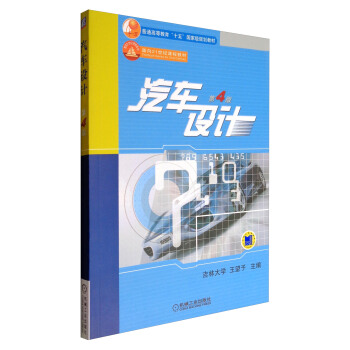

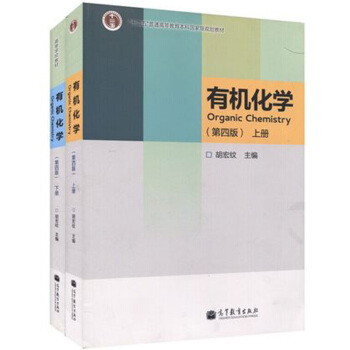

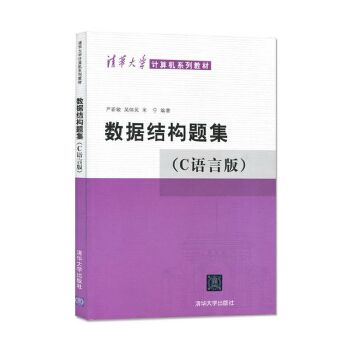
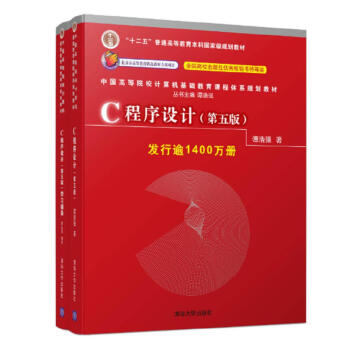

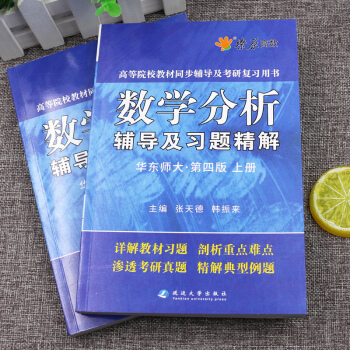
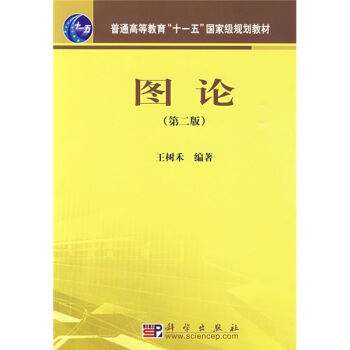
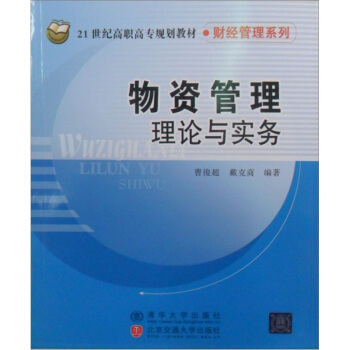
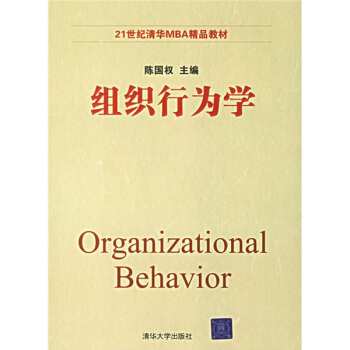
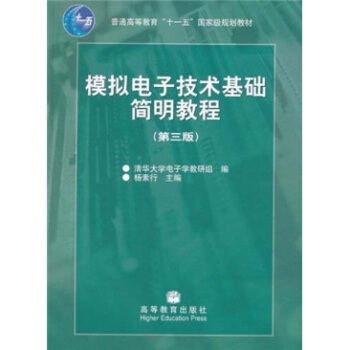
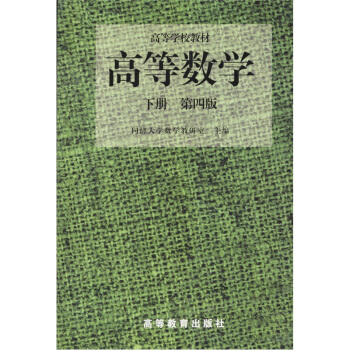
![高等教育百门精品课程教材:兽医病理学(第3版) [Veterinary Pathology] pdf epub mobi 电子书 下载](https://pic.windowsfront.com/11168045/rBEQWFD_S3oIAAAAAAn5pLC7UrMAAAExQPOB44ACfm8555.jpg)
![体验商务英语视听说教程2(教师用书)(附MP3光盘1张) [Powerhouse:Viewing,Lietening & Speaking] pdf epub mobi 电子书 下载](https://pic.windowsfront.com/11172046/5637097eNb0d06428.jpg)
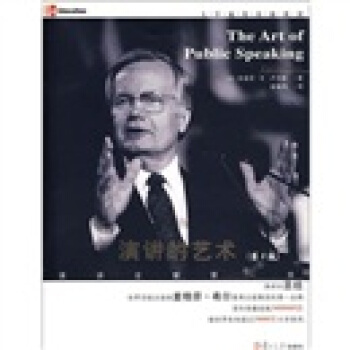
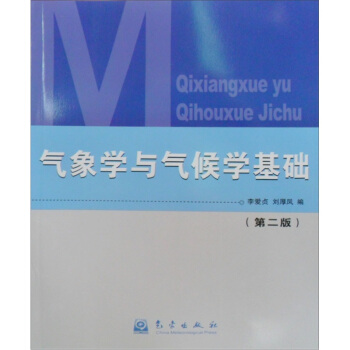

![21世纪经济与管理规划教材·金融学系列·固定收益证券:定价与利率风险管理(第2版) [Fixed Income Securities and Risk Management for Interest Rates] pdf epub mobi 电子书 下载](https://pic.windowsfront.com/11204641/rBEQWFFUIaQIAAAAAAfHl0lUez4AADDbgJPoboAB8ev348.jpg)